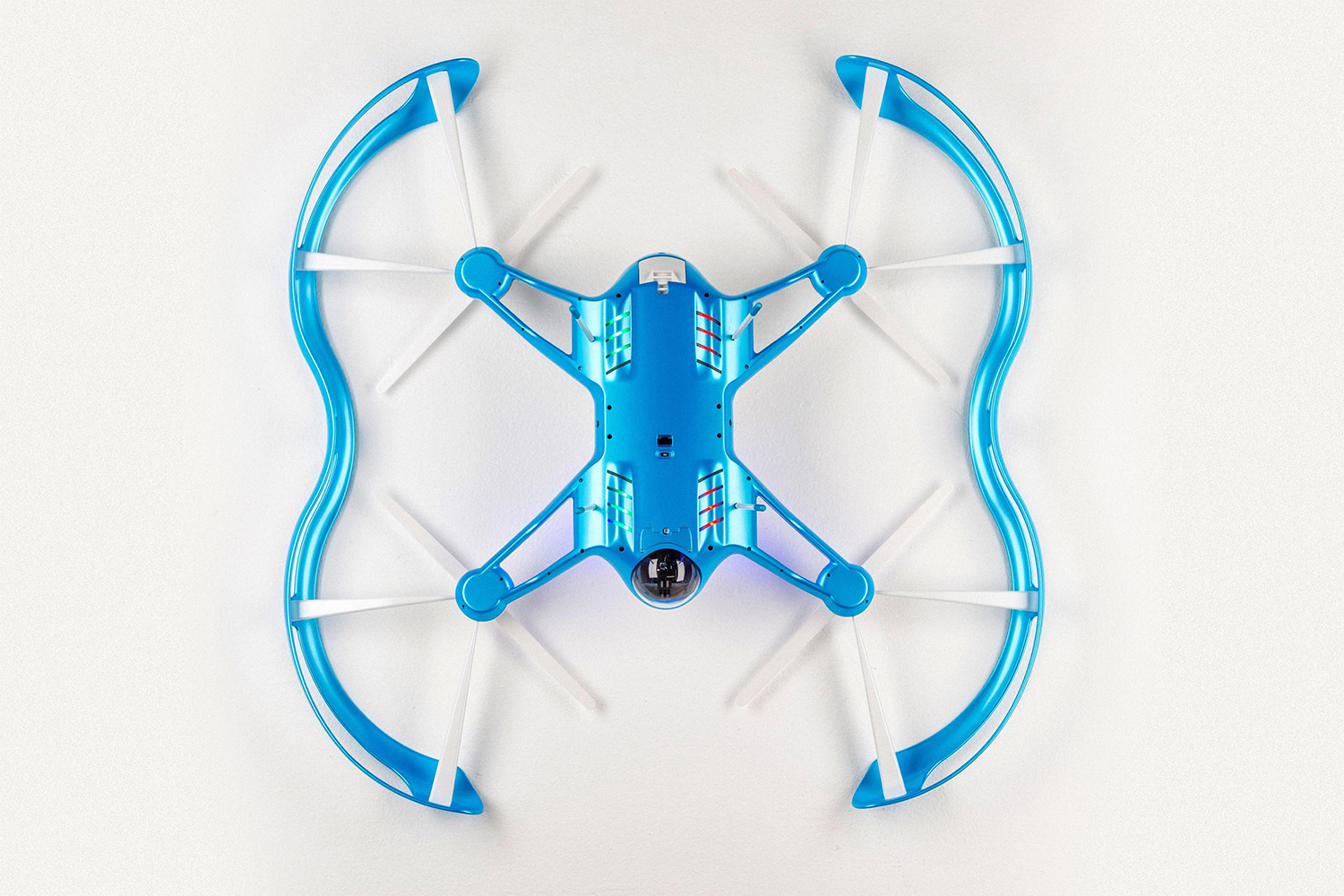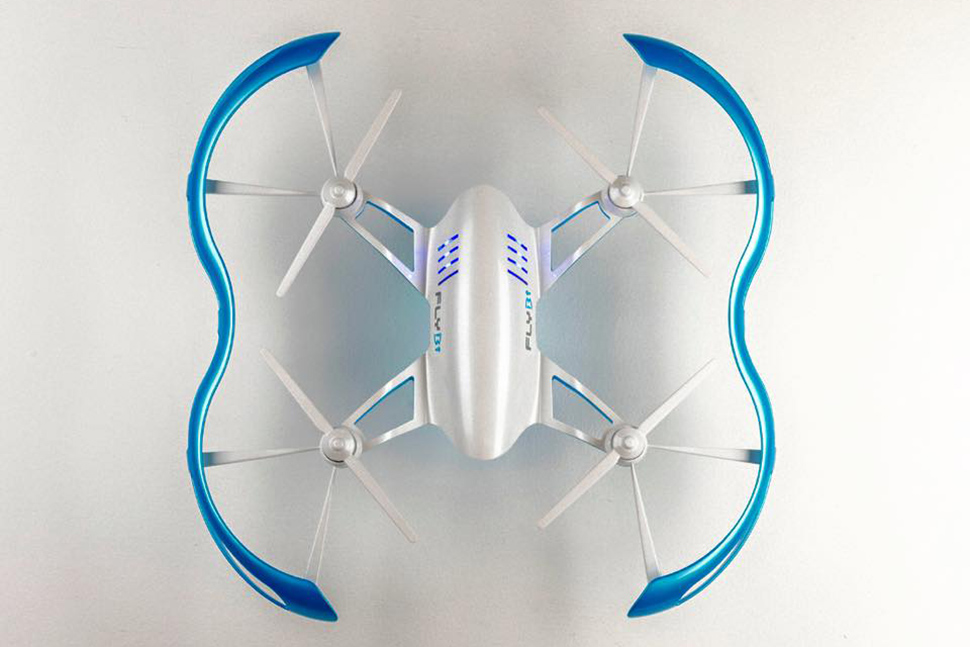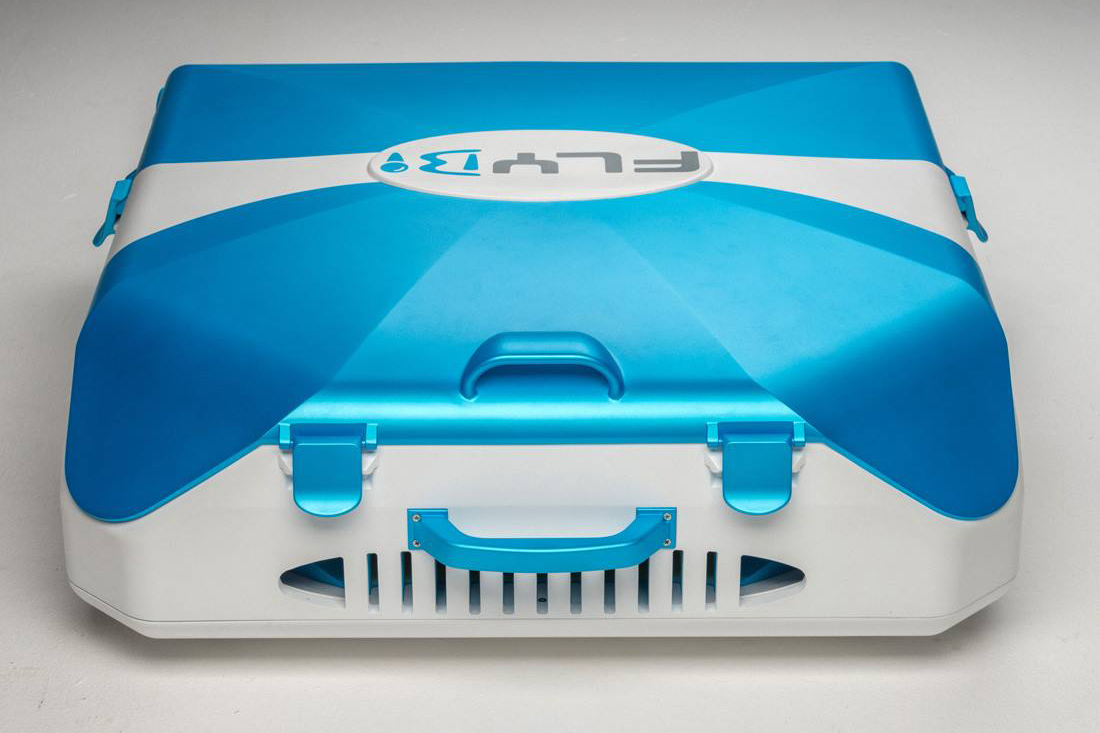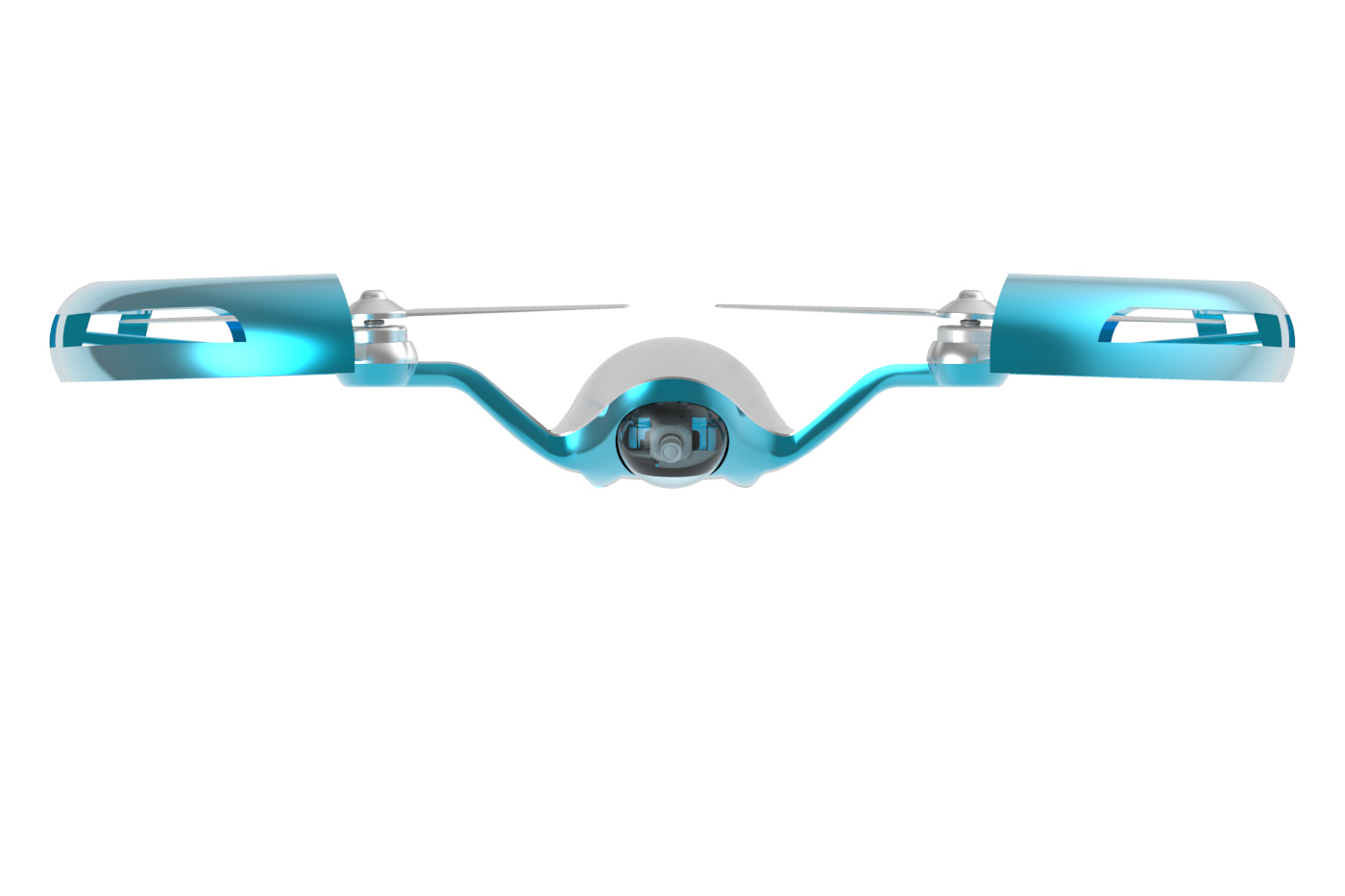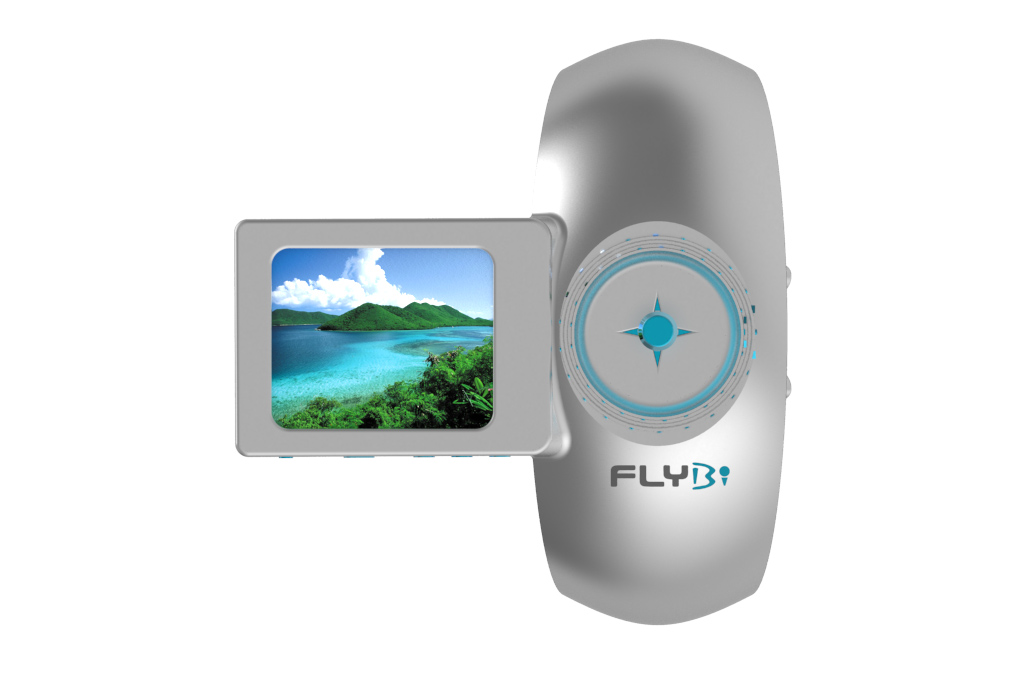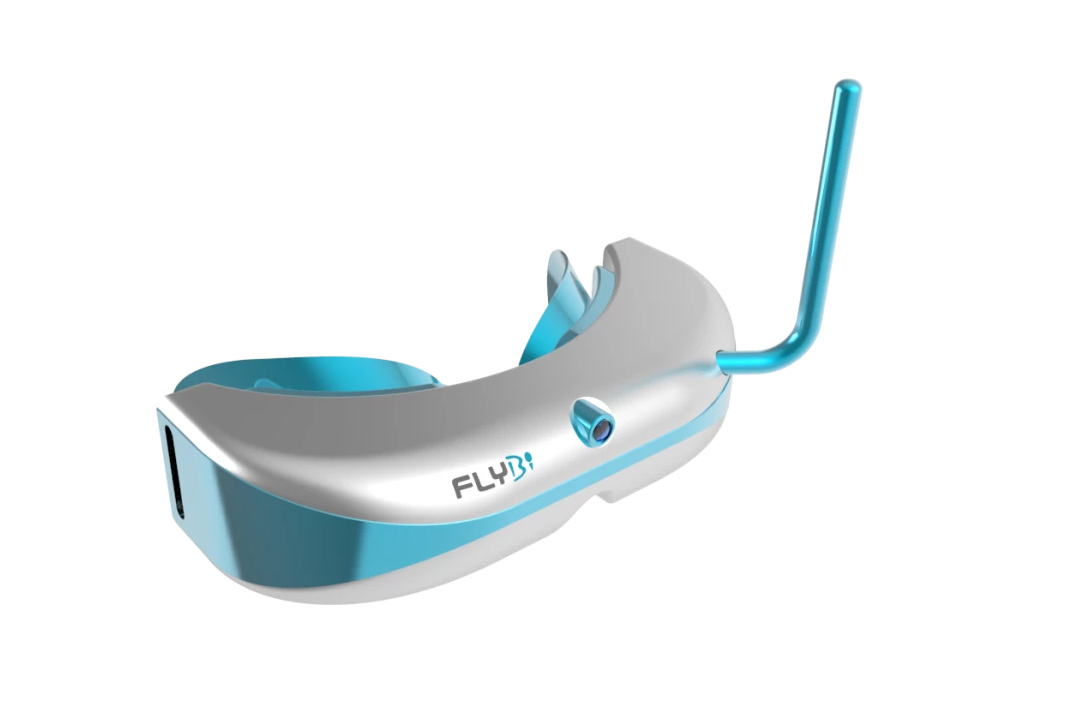The FLYBi has all the standard droid features such as a remote control, a companion app, and a 12MP camera capable of recording 1080 HD video. However, this is where the comparisons to modern drones effectively end. The FLYBi’s camera unit is installed on a gimbal connected to a head-tracking unit which allows the user to control the camera using only the movement of their head. The head-tracker goggles also provide a birds-eye view of the drone using a live video feed that’s sent to the two internal LCDs built into the glasses. Unlike some gimbals which offer 360-degree rotation, the FLYBi is limited to 55 degrees to prevent disorientation from the head control.
Users control the FLYBi using a waterproof, wearable controller containing a small joystick and a set of dedicated buttons. These buttons initiate take off, control hovering, take photos, and even return the drone back to its base. There’s also a matching 1.8-inch display with anti-glare glass which allows you to watch your drone during flight. The wrist-worn remote control is one of the first drone controllers that you can wear.
The system also sports a companion app pilots use to program the drone’s flight path. Once configured, the drone will follow the specified flight path, adjusting its course slightly when it encounters an obstacle. From take off to landing, almost everything about the drone can be performed autonomously making it easy for new users to experience flying such an aircraft with a minimal learning curve.
Once the drone returns after flying, it lands on its Helideck base, which is part landing platform and part storage system for the drone. When docked, the Helideck rapidly charges the drone and even swaps out the batteries autonomously in the even they need changing. The Helideck also holds the FLYBi and all its accessories in just one case. Users have the option to wear this case on their back like a backpack, and even comes with instructions on how to install it on a car roof for the ultimate landing pad.
Fans of this revolutionary new craft can find the FLYBi drone at its soon-to-launch Indiegogo campaign. The full package, which includes the FLYBi drone, the wrist control, the head-tracker goggles and two extra batteries, costs just $1495 for the first 20 people to back the project. Other packages include the Drone, Wrist RC, and goggles set for $1195, as well as a standalone drone for as low as a mere $595.
